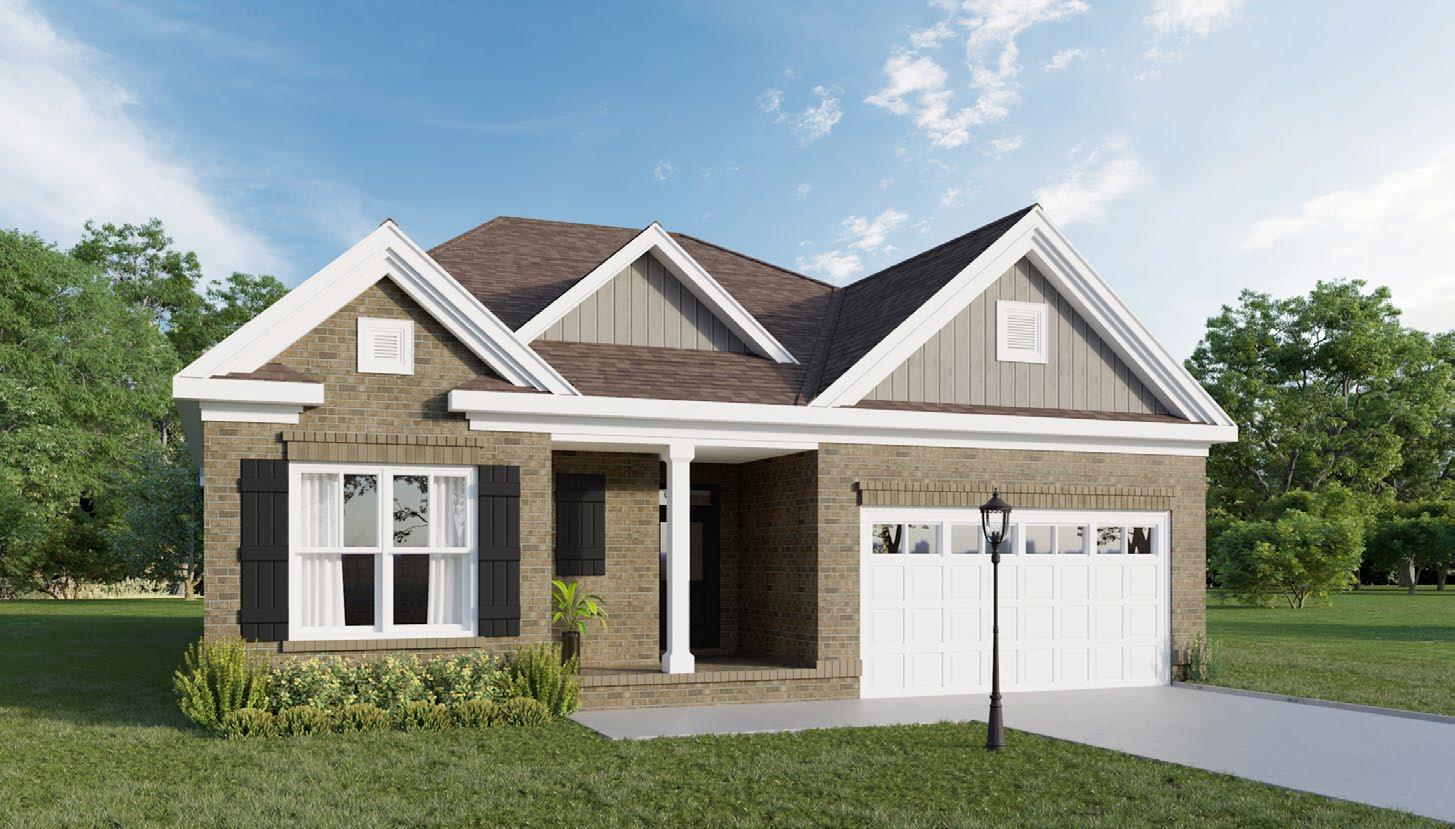
2 minute read
Universal Design: Homes that Work for Everybody
Northwoods Villas at Woodcreek Farms features the Sawgrass, a Certified Universal Living home by Executive Construction Homes.
The majority of U.S. homes today are designed to work best for the sensory skills, size and capabilities of an able-bodied, 170-pound, five-foot, nine-inch male.
Advertisement
What if homes were instead designed to be accessible to anyone, regardless of age, ability, preference (e.g., right or left handed) or size? That’s the idea behind universal design.
Understanding home design and remodeling options can be confusing, especially when some terms seem to be used interchangeably. Americans with Disabilities Act (ADA), aging in place and universal design have overlapping concepts, but each offers a distinct approach to home design.
The BIA of Central SC has made the process of building and remodeling for people of all ages and abilities easier with their Universal Living home certification. The program consists of an easy-to-follow checklist with many elements of accessible features to Universal Design features.
Builders and remodelers can choose which features to include in a project to attain a bronze, silver or gold level certification for that home. If you’re working with a local builder or remodeler on your home, ask them about including a Universal Living certification from the BIA of Central SC.
If homes today are designed for the average, five-foot, nine-inch male, then that is going to limit the ability of others to use those homes efficiently and effectively.
Just 3.5% of all U.S. homes included features such as grab-bars or handrails in the bathroom, extra-wide hallways and doors, and a bedroom on the entry level. Even simple remodeling projects can go a long way toward making a home more accessible to everyone.
Universal design elements can benefit those who want to age in place by improving visibility and functionality, which is why the terms are often used interchangeably. However, universal design is more comprehensive in its approach by ensuring people of all abilities — even young children — are able to access things they may need.
No matter the specific elements incorporated into a newly designed home, the design should be easy to understand, regardless of the user’s experience, knowledge, language skills, or current concentration level.
Examples of universal design include: • Providing at least one step-less entrance into the home; • Designing wider doorways that are easier to navigate (whether for a wheelchair or carting playpens from room to room); • Using sliding doors or barn doors for closets and/or bathrooms that can remain open without impeding space; • Incorporating handles that are easy to grip so drawers and doors are easier to open; • Providing easy-touch rocker or hands-free light switches; • Installing appliances, such as sideby-side refrigerators with handles running the length of the door, so that people of varying heights can easily access them; • Incorporating colors that provide a contrast, especially for troublesome areas such as wall corners and countertops.
It’s always a great time to start thinking about universal design, aging in place and similar concepts. u










